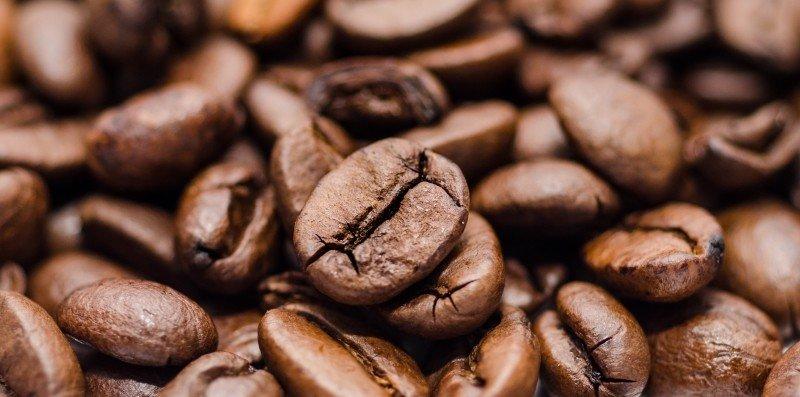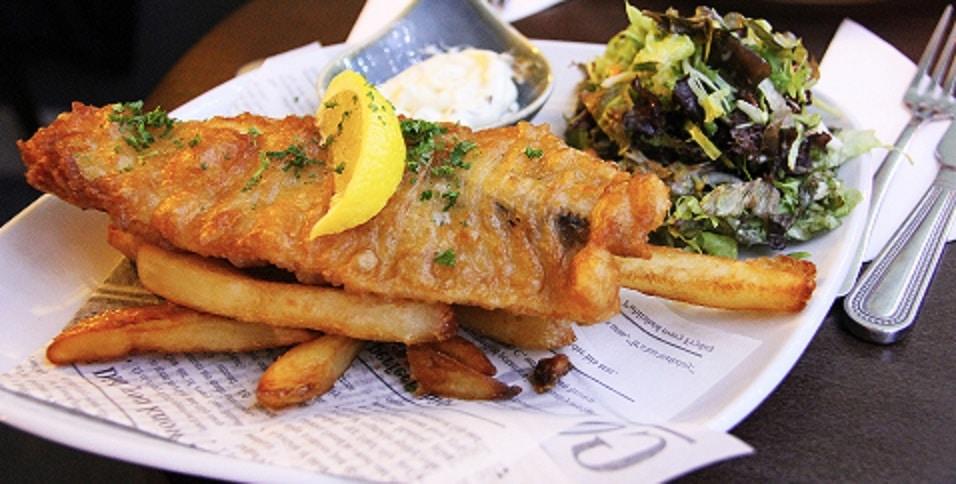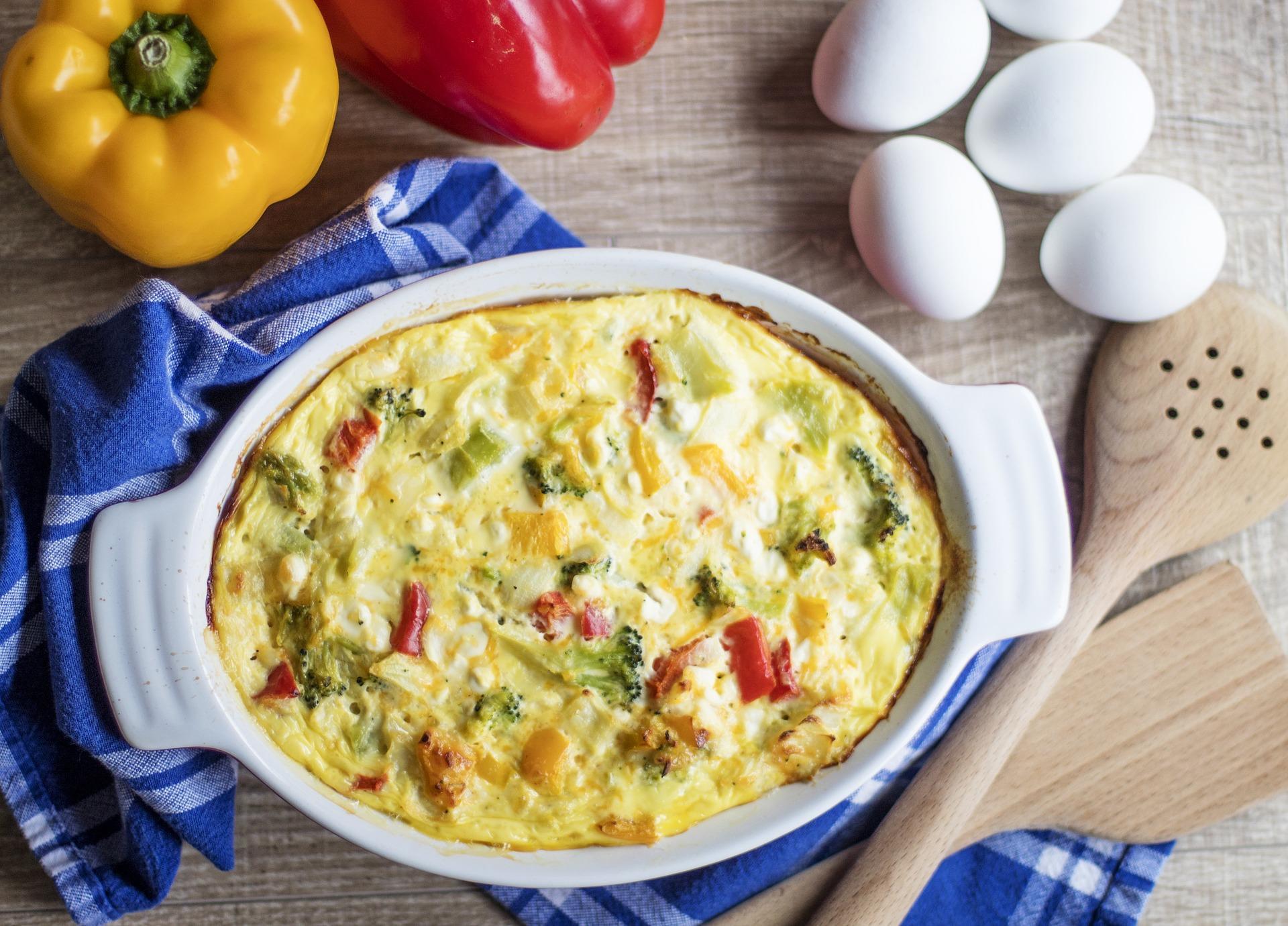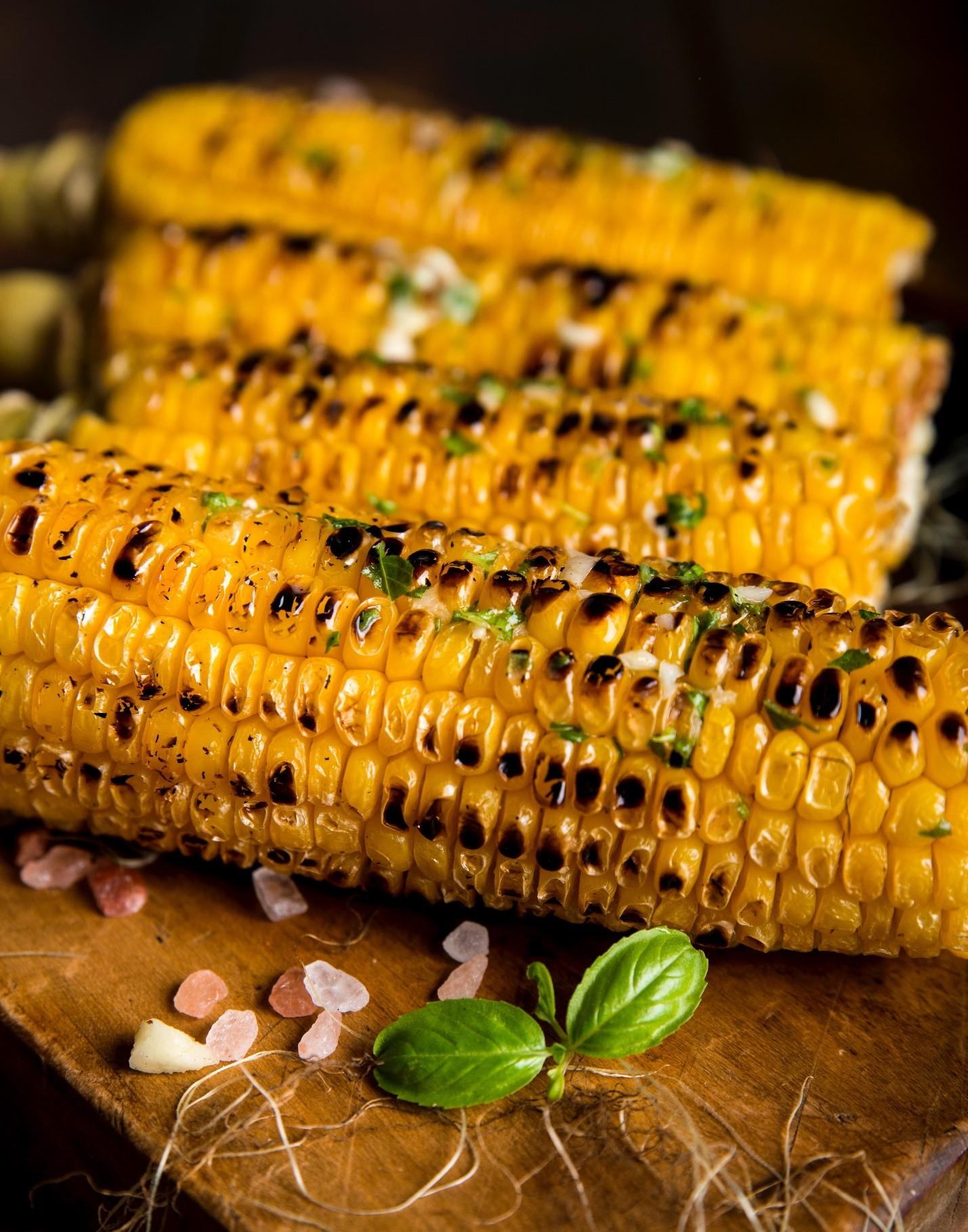Cooking is more than just a daily necessity—it is an art, a tradition, and a way of bringing people together. In Malaysia, where diverse cultures such as Malay, Chinese, Indian, and Indigenous traditions blend seamlessly, cooking holds a special place in every household. From preparing simple home-cooked meals to celebrating festive dishes like rendang, char kway teow, or roti canai, cooking is a way to express love, identity, and heritage. Whether you're a beginner or someone looking to sharpen your skills, understanding the basics of cooking is the first step towards mastering the rich and vibrant flavours that make Malaysian cuisine so unique.

Understanding Cooking: From Origins to Everyday Life
There are no conclusive evidence to prove the origins of cooking. Some researchers claim that cooking was invented around 2 million years ago while others argue that cooking has only existed for 40,000 years.
Regardless of when exactly it originated, cooking has been around for a long time and it continues to play a vital role in our daily lives all around the world. It may have started out as a means of preservation but has evolved into a fun and creative outlet for many people.
Since almost everyone loves food, there are multiple websites, blogs and YouTube channels dedicated to cooking ranging from recipes from all over the world to creative cooking classes.
In this article we will explore some of the important elements of cooking such as how to read recipes, basic knife skills and essential cooking techniques. We will also discover the many benefits of cooking and introduce you to the Malaysian food culture.
What is Cooking?
Cooking is the process of preparing safe and edible food by combining different ingredients and applying heat if necessary. Basically cooking is an act of transforming ingredients into a tasty dish. For example, bananas, flour, sugar and eggs can be combined and transformed into tasty banana bread!
It doesn’t matter if you are a qualified chef or a complete beginner, the key to successful cooking is to consistently cook and try out different dishes until you are confident with your food and discover the cooking techniques you are comfortable with.
What are the Benefits of Cooking?
There are multiple reasons why you should cook at home or learn how to cook if you don’t posses this vital skills. It doesn’t matter if you are a student or a working adult with a busy schedule, you should consider cooking and preparing your own meals rather than eating out. We have listed out the three main benefits of cooking below:
Lead a Healthier Life
Preparing fresh food at home is definitely healthier than eating store bought frozen food or even processed food. You will also know what exactly you are consuming as you cooked the meal. You will naturally choose healthier options with more nutrients as opposed to restaurants or cafes that focus solely on flavour. This is why you end up eating more calories when you dine out where a starter dish can amount to over 1,000 calories.
Furthermore, you are able to decide on the appropriate portion size and have total control over the recipe. This will lead to a healthier diet and lower the risk of obesity.
Save Money
Going out for a meal or ordering food from the multiple food delivery services such as Grab Food and Food Panda is a costly affair. When you eat out, you tend to spend additional money on drinks and deserts as well. Let’s not forget the service charge and tips.
The cost of buying ingredients and cooking your own meals at home is definitely cheaper if you plan your meals and buy your ingredients at an affordable store. If you have the space, you can grow your own fruits and vegetables to save more.
Boost Self esteem
Cooking is a great option to build your self-esteem. Learning and perfecting recipes and serving delicious food to your family and friends can work wonders on your self-esteem. The gratifying feeling you get when you successfully cook a dish or when another person enjoys the food you prepared, will make you believe that you have the ability to master anything you want and it will boost your confidence.

How to read recipes?
Before you start cooking, it is important to learn how to read recipes. If you are trying out a new dish, a well written recipe will make the cooking process much simpler.
Make sure to read the whole recipe until the end before you start cooking. This will help you understand and prepare the ingredients and equipments is required. Furthermore, reading the list of ingredients will sometimes inform you of any hidden prep required. For example, if the ingredients list include grated cheese, you must make sure you have grated the cheese before hand and not after you have heated the pan.
If there are any terms in the recipe that you don’t understand, google it as almost everything is explained clearly online. As a beginner, it is advised to follow the recipe closely, but allow yourself to be flexible to adapt to your situation. For example, if you are missing an ingredient or a piece of equipment, research what you can use as a substitute.
There are many recipes available online. If you are a beginner, it is better to start with recipes with videos. This is to help you get a better picture of the processes involved. Check out the comments section to see what others say about the recipe.

Start out with simple recipes that use basic ingredients and require minimal equipment, such as stir-fried vegetables, pasta, or fried rice. These dishes are great for practicing essential skills like chopping, sautéing, and seasoning, without overwhelming yourself. As you become more comfortable with cooking terms, measurements, and kitchen tools, you’ll gradually build confidence and can move on to slightly more complex recipes that involve baking, marinating, or layering flavours.
Don’t worry if things don’t turn out perfectly at first—mistakes are a normal part of learning. Each cooking experience helps you understand ingredients better, improve your timing, and develop your own style. With time and practice, you’ll not only be able to follow recipes with ease but also adapt them to your taste or even create your own. Most importantly, enjoy the process and be patient with yourself—cooking is a journey, not a race.
Cooking at Home
Preparing a meal at home might be challenging for some. Many of us are lead a hectic lifestyle, juggling work, family and maintaining a social life. It does seem more convenient to just eat out, order take-out or heat up pre-made food like frozen pizza or canned beans.
Cooking might seem difficult at first if you weren’t taught the basics from a school or a family member. However, with a few basic skills and ingredients, preparing your own meals can be a rewarding experience overtime.
Some of the basic cooking equipments you need to start cooking at home are:
- Cutting knives
- Chopping board
- Wooden spoons
- Spatulas
- Measuring jug
- Mixing bowl
- Skillet for frying and sautéing
- Wok for stir-frying
- Pots for boiling, simmering, and stewing
Basic Knife Skills
It doesn’t matter if you are chopping vegetables or herbs, learning the basic knife skills will not only keep you safe but get you the results you want. Some of the important things to keep in mind when using a knife is to:
- Always use a sharp blade to cut swiftly without strain
- Ensure that you have the right grip (wrap your fingers around the knife where the blade and the handle meet)
- Create a stable surface (place towel under chopping board to ensure good grip)
Some of the common cutting techniques are:
An Introduction to Cooking
| Serial No. | Technique | Explanation |
|---|---|---|
| 1 | Slice | To cut into thin and flat strips |
| 2 | Dice | To cut into small squares |
| 3 | Mince | To cut into tiny pieces even smaller than dicing |
| 4 | Chop | To cut into medium size pieces |
| 5 | Peel | To remove the outer skin or layer using a peeler or knife |
| 6 | Carve | To slice large cuts of meat or poultry into portions |
| 7 | Cube | To cut into larger, uniform square pieces |
| 8 | Fillet | To remove bones from meat or fish, leaving a clean, boneless portion |
| 9 | Shred | To cut or tear into thin strips (often used for cabbage or cheese) |
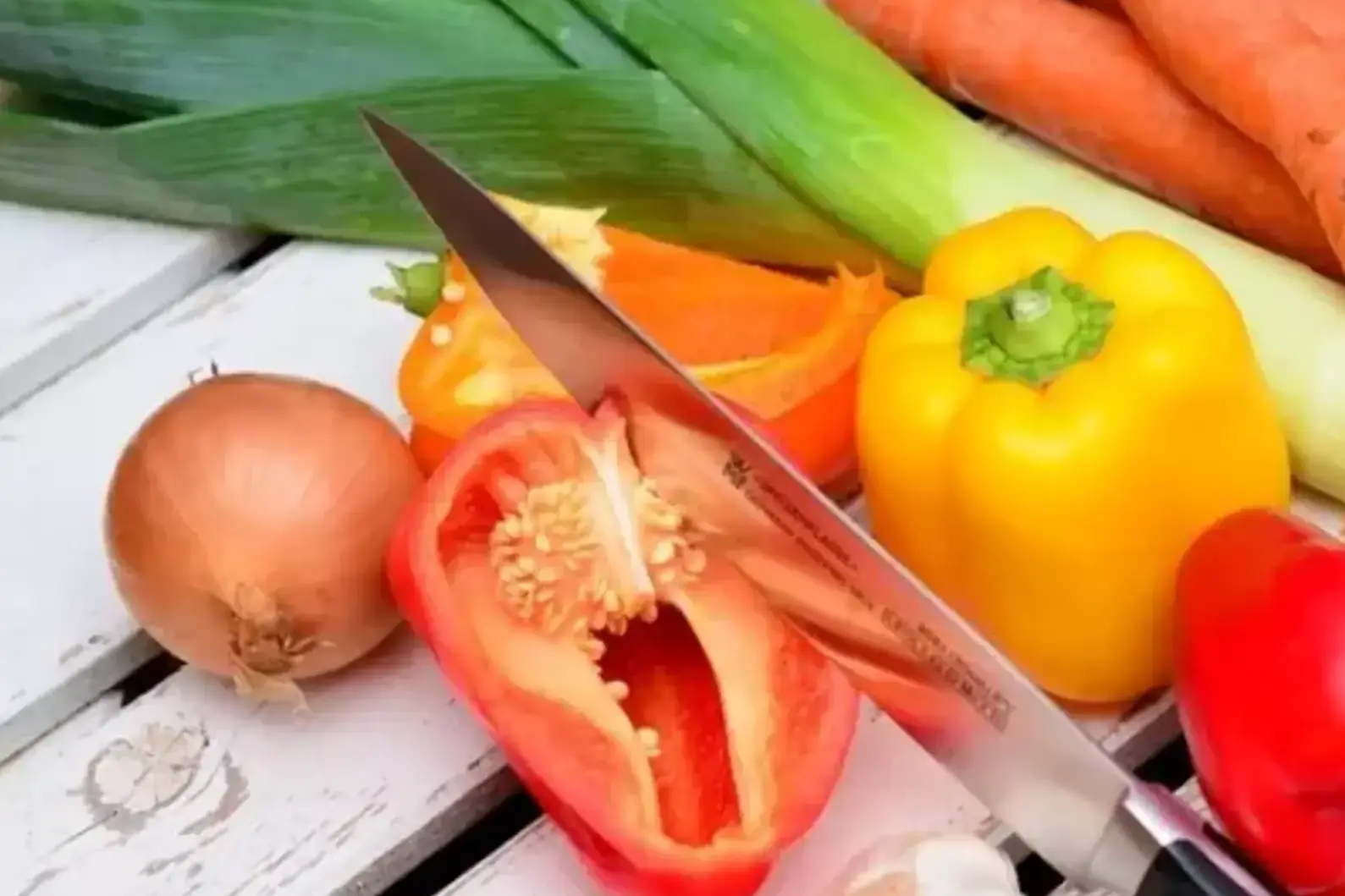
Tip: Keep knives sharp to stay safe when cooking, as dull knives are a safety hazard and can be very dangerous.
Essential Cooking Techniques
There are a variety of cooking techniques that help bring out the unique tastes, textures, and aromas in a dish. Whether you are preparing a hearty family meal or experimenting with new ingredients, understanding different cooking methods can greatly enhance the outcome of your food. Each technique offers its own way of transforming ingredients—by softening textures, deepening flavours, or preserving nutrients. Therefore, we encourage you to explore the various cooking methods that can elevate your culinary skills and take your dishes to the next level.
Steam
Steaming is a gentle and healthy cooking technique where food is placed in a basket, colander, or steamer tray above a pot of boiling water. The rising steam surrounds the food and cooks it evenly without submerging it in liquid. This method is especially ideal for retaining the nutrients, colour, and natural flavour of vegetables, but it's also commonly used for cooking fish, dumplings, and even rice cakes. Since it doesn't require oil, steaming is perfect for those looking to prepare lighter and more health-conscious meals.
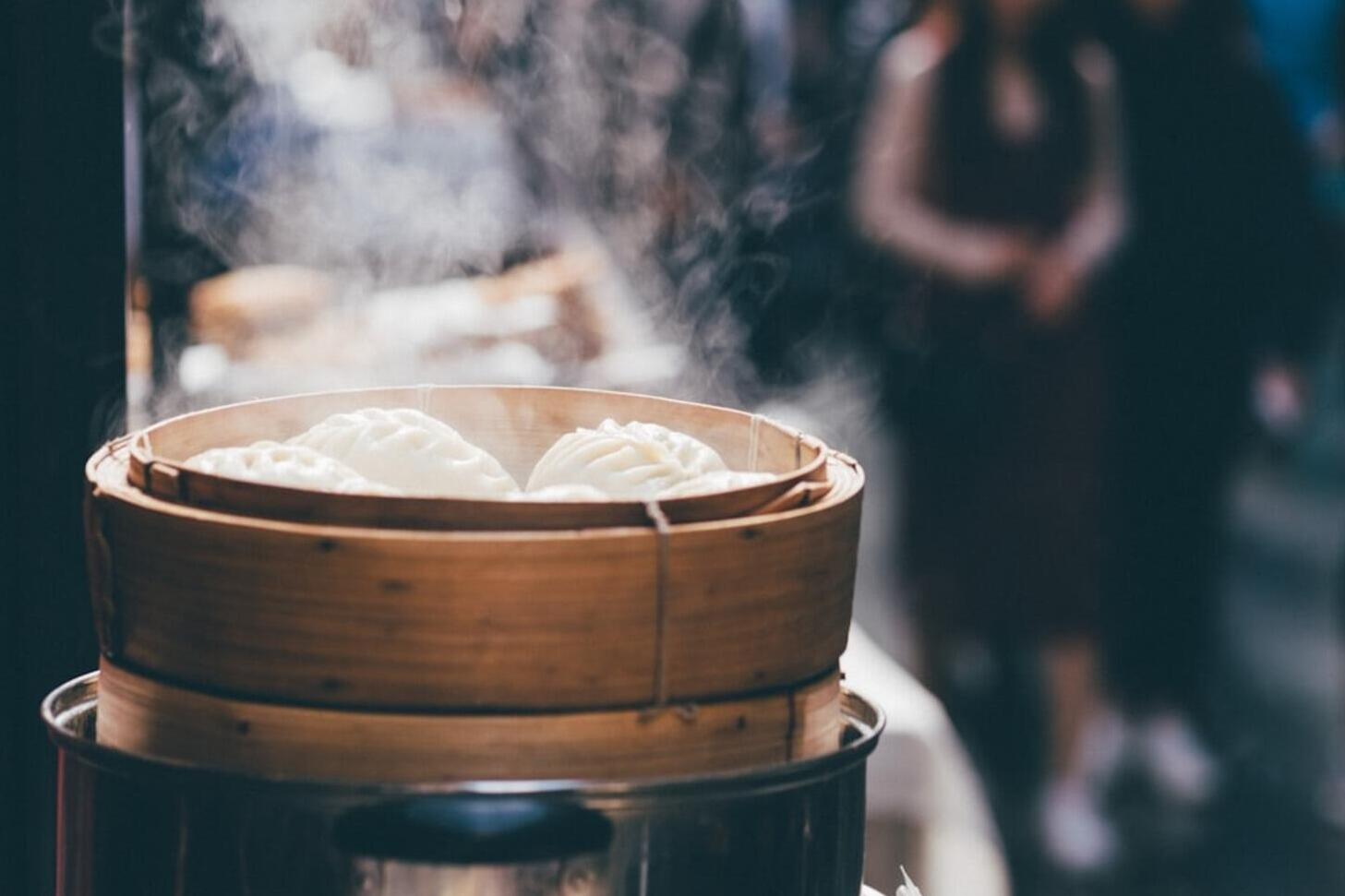
Sauté
Sautéing is a quick cooking method that involves cooking food over high heat with little to no oil while continuously stirring or tossing it in the pan. It is a dry heat technique that helps brown the surface of the ingredients, enhancing both aroma and flavour. Sautéing is perfect for vegetables, thin cuts of meat, seafood, and aromatics like garlic or onions. Since it requires constant movement, it’s important to keep your ingredients evenly cut and avoid overcrowding the pan.
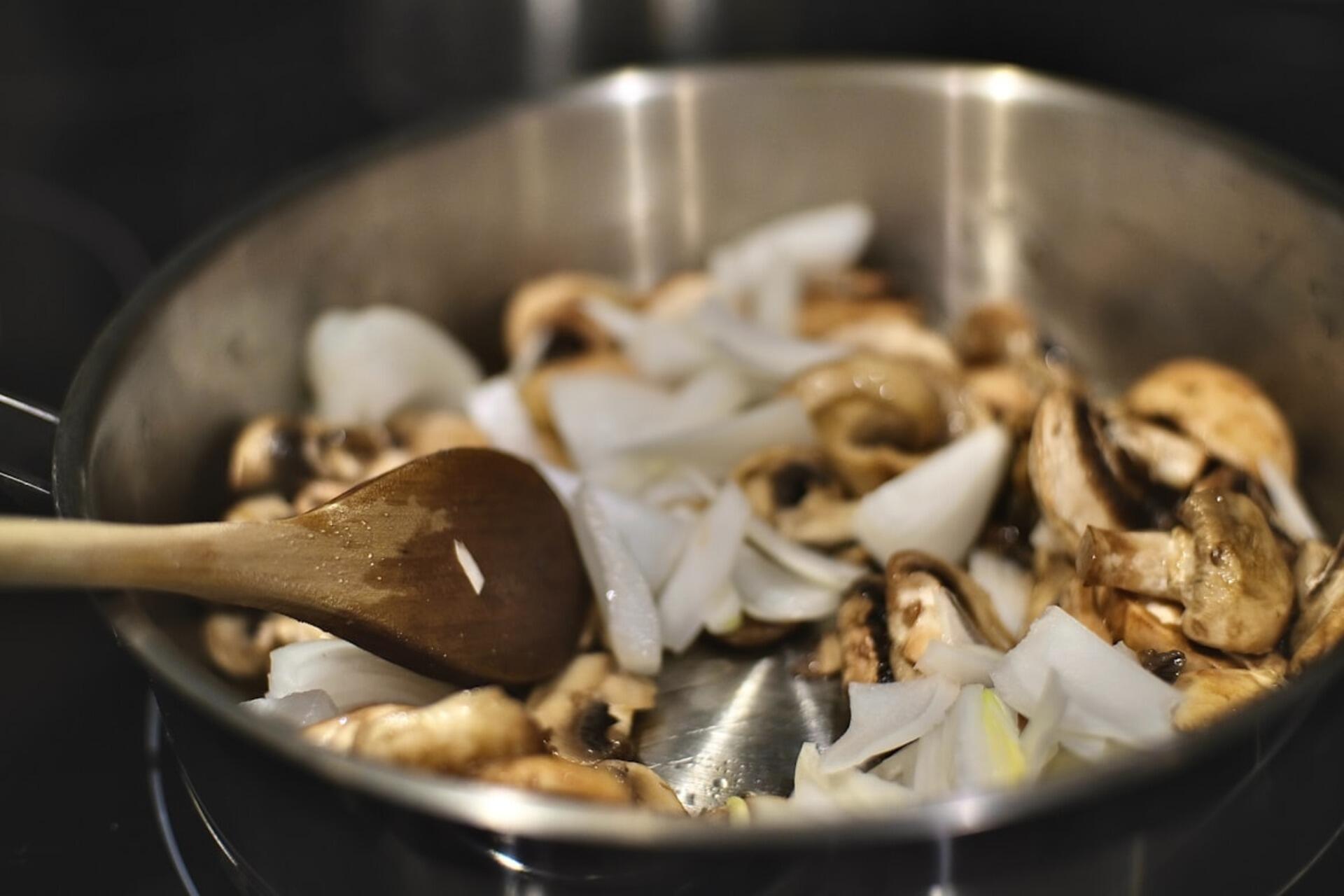
Boil
Boiling is a simple and commonly used method where food is cooked in hot water that has reached its boiling point (100°C or 212°F). Water is heated in a pan or pot, usually on a stovetop, and once boiling, ingredients are added and allowed to cook thoroughly. This technique is ideal for pasta, eggs, vegetables, and soups. For better results, keep an eye on the cooking time to avoid overboiling, especially for delicate items.
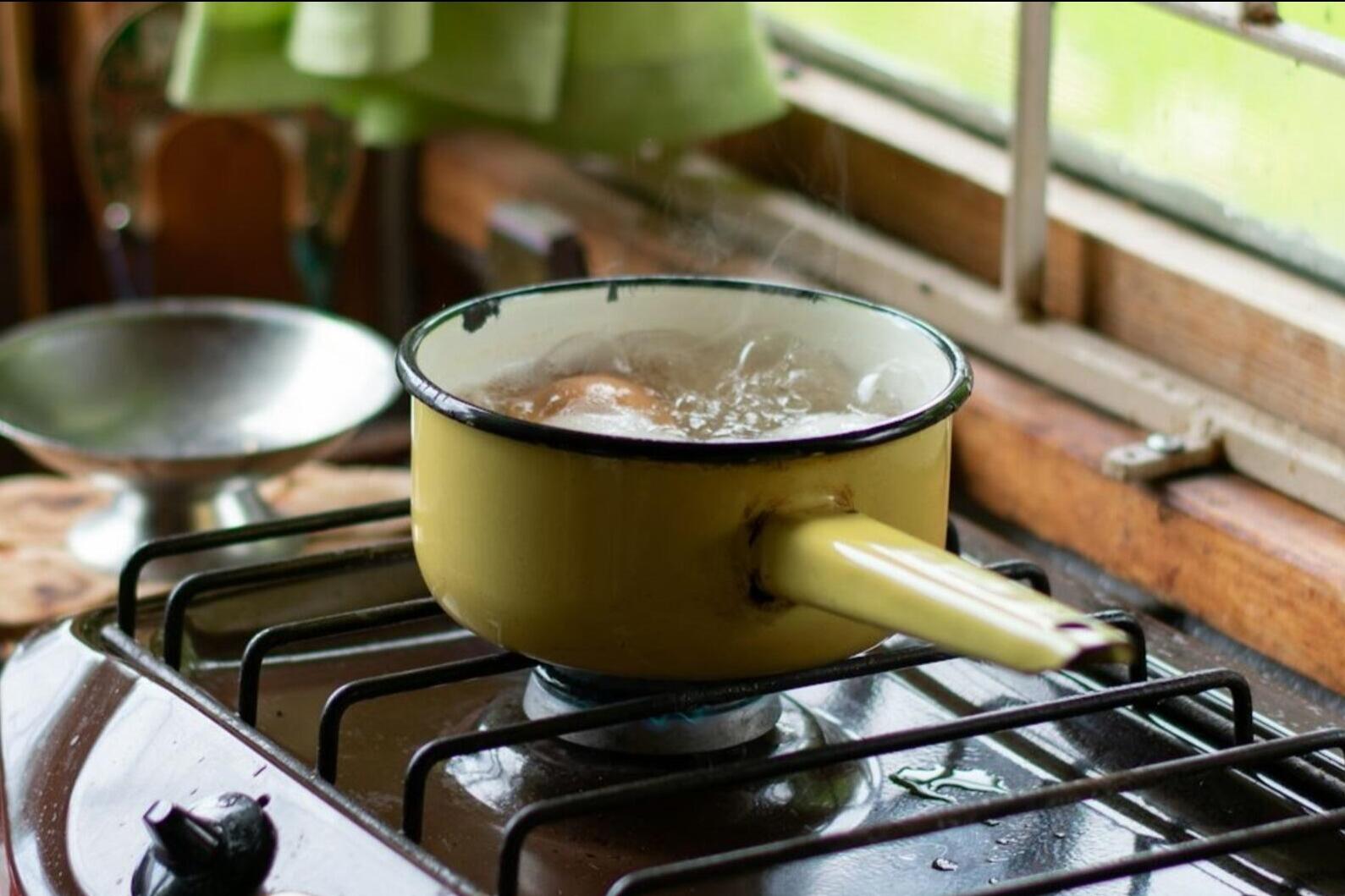
Roast
Roasting is a dry heat cooking method that involves cooking food evenly from the outside to the centre using an oven. This technique is often used for meats, poultry, root vegetables, and even some fruits. The key to successful roasting lies in setting the correct temperature and cooking time based on the ingredient. A well-roasted dish develops a beautifully browned surface and rich, concentrated flavours.
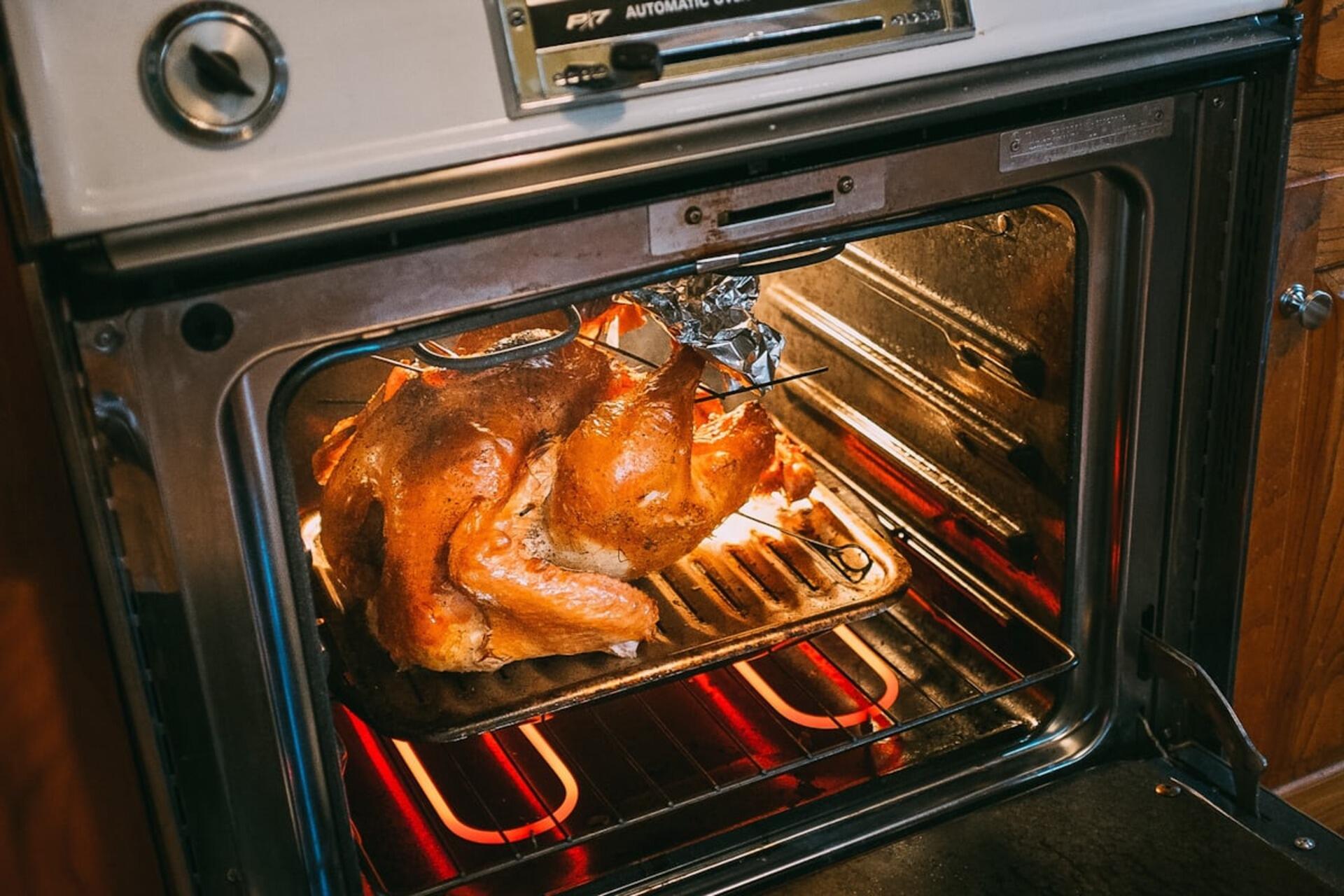
Some of the other common cooking techniques are given below in the table:
| Serial No. | Technique | Explanation |
|---|---|---|
| 1 | Pressure Cooking | Cooking food quickly in a sealed pot using steam pressure—saves time and retains flavour. |
| 2 | Smoking | Slowly cooking food over indirect heat while exposing it to smoke for flavour and preservation. |
| 3 | Grilling | Cooking food over direct heat, usually on a grill or barbecue, to create a smoky, charred flavour. |
| 4 | Braising | A combination method where food is first seared, then slowly cooked in liquid to become tender. |
| 5 | Simmering | Gently cooking food in hot liquid just below boiling point—ideal for soups and stews. |
| 6 | Poaching | Cooking delicate food in hot liquid below boiling, often used for eggs, fish, and chicken. |
| 7 | Stir-Frying | Quickly cooking small, uniform pieces in a wok with a little hot oil while constantly stirring. |
| 8 | Deep-Frying | Submerging food fully in hot oil to cook quickly and achieve a crispy texture. |
| 9 | Broiling | Cooking with high heat from above, usually in an oven—ideal for browning or melting toppings. |
Since the only way to improve your cooking is through consistent practice, don’t hesitate to try out new dishes and refine the ones you already know. Experiment with different techniques, ingredients, and cuisines. If you’re looking for inspiration, check out trusted online resources like BBC Good Food, Rasa Malaysia, or other cooking websites that cater to your preferences and skill level.
Malaysian Food Culture
Malaysia is a country well-known for it cultural diversity where people from different races and religion live in peace harmony. The multi-ethnic influence has contributed towards the wide variety of food available from different cultures. Here are some of the major types of cuisine you can find in Malaysia:
Malay Cuisine
Malay cooking involves using a lot of spices, as well as coconut milk which is important to produce fatty and thick food. Seasonings such as belacan (fermented shrimp paste)and budu (fermented fish sauce) are important to add to the taste of food. Some of the well-known Malay dishes are nasi lemak, rendang and dodol.
Chinese Cuisine
Chinese cuisine found in Malaysia consists of different cooking styles, the main ones being Hokkien, Hainan, Cantonese, Hakka and also Teochew as most Malaysian Chinese today are descendants from southern China. Overtime, Chinese food in Malaysia has incorporated local characteristics in it dishes creating tasty and unique dishes. Dim sum and yong tau fu are among the many varieties of popular Chinese food in Malaysia.
Indian Cuisine
In Malaysia, both Southern and Northern Indian cuisine are easily found almost everywhere. Southern Indian cuisine tends to be spicier and widely uses coconut milk, chillies and mustard seeds. While rice is the centre of the southern meal, northern Indian cuisine replaces rice with bread or chapati and uses ingredients such as yogurt and ghee in its dishes. Banana leaf rice and thosai are some of the famous Indian dishes that is loved by all locals.
Baba Nyonya Cuisine
Baba Nyonya cuisine is a mixture of Chinese and Malay culture where they adopted Chinese cooking methods while using Malay ingredients or incorporating new ingredients to the existing dishes. This led to the creation of the many peranakan dishes we know today. Some of the well-known Baba Nyonya food are ayam pong teh, cendol and pai tee.
Are you interested in learning how to cook? Find for the right tutors here on Superprof who will help you achieve your goals!


















